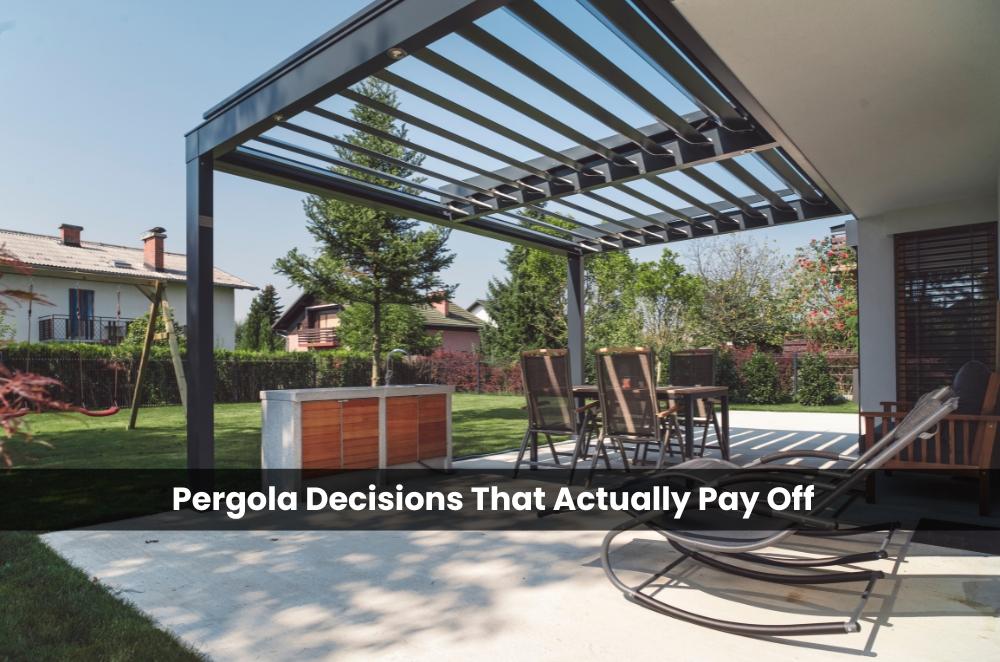Pergola Decisions That Actually Pay Off

Outdoor rooms don’t need four walls; they need intent, shade, and a reason to linger. When you’re adding a pergola to your outdoor entertaining area, you’re not just ticking a garden feature off a list. You’re setting the stage for Sunday lunches, midweek breaths of fresh air, and a cooler, calmer deck when the sun bites. A well-sited structure frames the view and nudges traffic where it should flow. It softens glare, shelters furniture, and gives plants somewhere to climb. Done thoughtfully, it raises liveability without screaming for attention. That’s the quiet magic: form that works hard, and space that finally gets used. Built right, it lasts for decades easily.
What difference does a pergola make?
Shade, structure, and a visual cue transform dead corners into everyday living. The right footprint makes the barbecue queue shorter and the afternoon heat less punishing.
We see it every week: a modest frame quietly reorders how people move and gather. Add climbing natives, a retractable canopy, or louvres and you’ve got seasonal flexibility without a renovation. If you’re weighing options, sketch pergola design ideas against wind, glare paths, and the neighbour’s sightlines. Push shade to the spots that earn it—over the cooking zone, the kids’ table, or that patch that burns hottest at 3pm. Keep spans honest, posts aligned with existing lines, and don’t crowd the deck’s breathing room.
-
Boosts comfort by cutting heat and glare
-
Extends entertaining hours into evenings
-
Creates privacy from neighbouring views
How do you get the sizing right?
Proportion drives comfort. Too small feels apologetic; too large swallows light and breeze.
Start from use: seated groups, a prep bench, and circulation around chairs. Allow generous overhangs so rain doesn’t sheet onto plates. Depth matters more than width; two bays often beat one giant span for affordability and stiffness. Think about future moves—heaters, fans, or screening—and route power early. If the block slopes, stepping the structure can maintain sightlines back to the kitchen.
-
Makes gatherings flow smoothly with space to move
-
Improves function with weather protection where needed
-
Future-proofs the area for flexible upgrades
Which materials suit Aussie conditions?
Coast to country, durability shifts with exposure. Natural finishes bring warmth; steel and aluminium push maintenance down.
In harsh coastal air, powder-coated aluminium shrugs off salt and needs little more than a hose-down. Galvanised steel suits bush blocks where strength matters and ember resistance is part of the plan. Hardwood sings when you want texture, but treat, seal, and detail drip edges so it ages gracefully. Roofing choices change the mood: polycarbonate for light, insulated panels for heat control, or open battens when you want trees and sky to do the work.
Done with intent, a pergola doesn’t shout; it invites. Map sun angles, respect wind, and build for the way your mob actually hosts. Good planning makes decisions easier, and resources like pergola options in Australia can help you line up the right fit.
Final thoughts
A pergola is more than shade; it’s a frame for living. When proportion, materials, and placement align, the structure blends into daily rhythm instead of dominating it. Careful design adds value, comfort, and purpose. That’s the reward: an outdoor area that draws people in, season after season.
- Vibnix Blog
- Politics
- News
- Liberia News
- Entertainment
- Technology
- Образование
- Art
- Causes
- Crafts
- Dance
- Drinks
- Film
- Fitness
- Food
- Игры
- Gardening
- Health
- Главная
- Literature
- Music
- Networking
- Другое
- Party
- Religion
- Shopping
- Sports
- Theater
- Wellness


